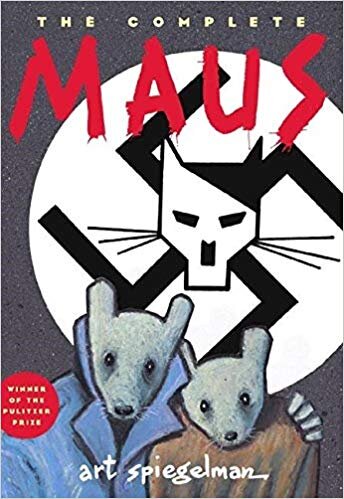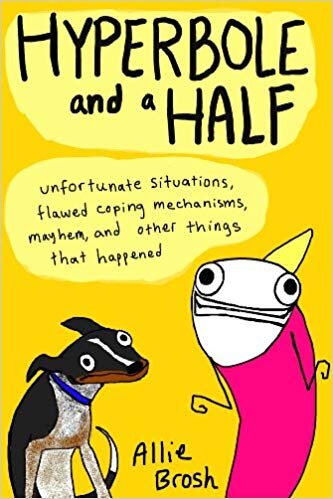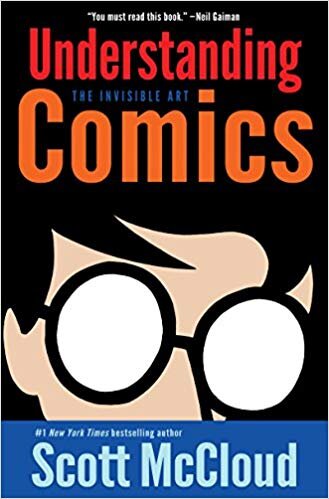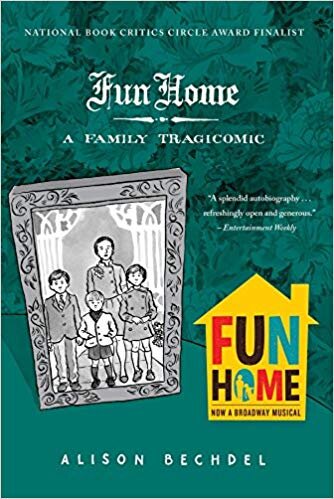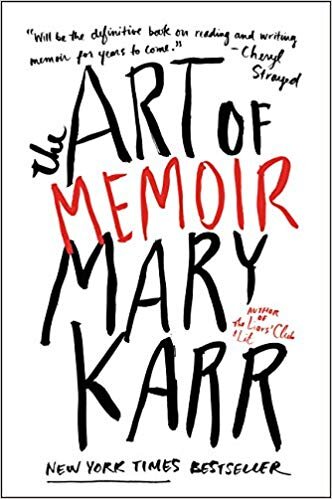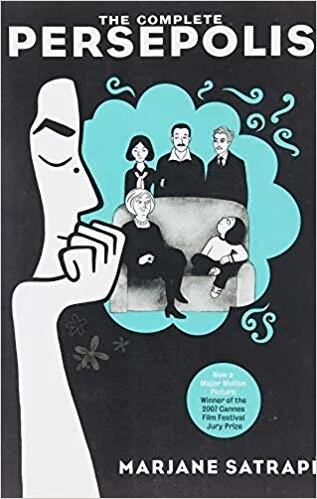Inkslingers & Wordsmiths: Writing the Graphic Memoir
I built this course at CU with one goal: to reach students at the intersection of the memoir and sequential art genres. In the class, students read memoir essays and graphic memoirs, and then write essays and craft accompanying comics. We study books like Mary Karr’s Art of Memoir, Brenda Miller’s Tell it Slant as well as Scott McCloud’s Understanding Comics. And we read excerpts from Cheryl Strayed’s Wild. The course begins with a solid study of the memoir genre from a writerly perspective. We discuss the problems of memory, how we can learn to remember, and how to forgive (or just let go of) the sense of order that we think we have over our minds. Then, we begin our study in the sequential arts with McCloud and our first book, Hyperbole and a Half by Allie Brosh. We all love Brosh so much because it’s relatable, full of anxiety and real-life ridiculous things. But more than anything there’s an authenticity to her experiences that make the reader just stop, reread, cry, laugh, and read the book again (and usually pass to a friend). Her collection reminds us that we are all connected through the absurdity of being human, the bizarre trauma we carry that’s bundled up with the weirdness of depression and anxiety. Regardless of your mental state, you will find her work engaging. I promise. From Brosh, we dive head into a diverse group of stunning memoirs.
Here are the foundational books we read in this course. Each one is an extraordinary work of art. Keep reading below for micro-lectures!
Understanding Comics by Scott McCloud
Early on in the semester we read Scott McCloud’s supercritical and still mind-blowing-after-all-these-years book, Understanding Comics. McCloud’s book to me is still the best book out there about writing, reading, and making comics. If you haven’t read McCloud yet, please do! Read it cover to cover. Read it again. Follow him on Twitter. Then read your favorite comic book and finally understand why you felt what you felt at certain times. MIND BLOWN guaranteed.
So, let’s start with the first couple chapters of McCloud. One of the coolest McCloudian ideas that you can ponder for eternity is his diagram of “The Picture Plane.” This diagram essentially illustrates that there are three points that make meaning: icons, reality, and language. As an image slides along from close to photograph all the way to abstraction or symbol to language our brains make meaning in different ways. The more photographic an image, the less wiggle room our brain has to make new meaning. The more symbolic the image (a smiley face for example) the more we put meaning onto that image ourselves. Think: emojis. SO MUCH MEANING IS MADE from such a small icon. Feast your eyes on “The Picture Plane” (below) which can be found on page 51 in his Understanding Comics.
*I’m not going to go over all the key concepts in his book, because you should really buy his book (as my students have). But here are some teasers.
Icon: 'Any image used to represent a person, place, thing, or idea.'
The 'universality' of a cartoon image: 'when you enter the world of the cartoon -- you see yourself. ... We don't just observe the cartoon; we become it.'
Combination of 'iconic characters with unusually realistic backgrounds ... allows readers to mask themselves in a character and safely enter a sensually stimulating world.'
Characters drawn more realistically are 'objectified.'
In comics, words are the ‘ultimate’ abstraction.
The picture plane as a triangle with Reality at the left bottom corner, Language at the right bottom corner, and Picture Plane or Art Object at the pinnacle. The Picture Plane is 'where shapes, lines, and colors can be themselves and not pretend otherwise.'
Closure: a comic shows parts of thing that the observer then perceives as the whole.
The gutter: the space between the panels of a comics; our imagination takes the two images that border the gutter and transforms into a single idea.
"If visual iconography is the vocabulary of comics, closure is its grammar." OMG I LOVE THIS LINE.
From Scott McCloud’s Understanding Comics.
Persepolis by Marjane Satrapi
Marjane Satrapi’s Persepolis is one of the best books written in any genre in the past twenty years. Yes, I am a fan. :) It’s so powerful that it inspired a generation. She takes so many risks and the narrative and illustrations are authentic and raw. While some early on criticised her illustrations for being rudimentary, the claim was strangely silly. If you consider McCloud’s idea of “The Picture Plane” and the simplicity of her character renderings, Satrapi’s coming-of-age-tale becomes universal. We can see ourselves in her character’s position, dealing with all the sorts of things that teens deal with. And with something they shouldn’t have to: war.
This week in my course we are applying McCloudian theories of comic storytelling to Persepolis. Some panels defy categorization. Some of my favorite pages exist outside of time — the image is literally panel-less and seeps into our consciousness FOREVER.
If you are reading the book, pay attention to moments where the image and text juxtapose each other, as well as scenes, pages, and panels that change your connection to time. When an image doesn’t have a panel framing it, it defies gravity. The simplicity is the point.
I also love hearing from authors, no surprise, so here’s an interview with Satrapi where she talks about the book.
Interview with Marjane Satrapi on Movie Web.
Maus by Art Spiegelman
This week we read Maus Book I & II. No matter how many times my students or I read it, it always hits hard. Spiegelman really paved the way for comics to be taken seriously. In fact, the Pulitzer Prize made a special category for Maus because it wasn’t fiction and they were like “What is this beautiful painful thing and how do we talk about it?”.
If you don’t know much about Maus, it’s a work of graphic nonfiction, a memoir of Spiegelman’s process of understanding his father’s time in Auschwitz. It’s actually that and so, so much more. The characters are masked as animals (Jews as mice, Nazi’s as cats, etc.) and this is a deeply symbolic representation of identity. The book doesn’t shy away from the impossible horrors of the Holocaust, or what it means to be a child of a survivor.
Alongside Maus, we read a great article by Susan Ketchum Glass “Witnessing the Witness: Narrative Slippage in Art Spiegelman’s Maus.” What really hits home with this book is the literal palimpsest nature of the text. Not only is Art interviewing his father about his survivor story, he presents two selves for each of them. There’s Artie (as a young man), Art as the author of the text wondering if he has the ability to make such a thing, Vladek (the young man in Auschwitz), and Papa (Art’s aging father he is interviewing). At times these four selves collide on the page in ways that are only possible in the comic book landscape. Literally, past and present are represented in ways that shows the impossible and ever present nature of trauma, survivor, PTSD, and being a child of survivors. While many of us might not have family who survived the Holocaust, many of us can still relate to the painful trauma that parents carry from other forms of diaspora, immigration, and otherness.
As a kid born in America with parents on both sides who’ve had to survive something, the book gives me hope and teaches me patience. My father was a 1-year-old during the eve of India’s Partition and he was carried by my Sikh grandmother in gruesome circumstances to the new land south. My mother’s family fled Germany to Poland, etc. during WWII but she was born post-war with the scars of the past still looming. My parents did everything to make sure we succeeded. They instilled an impossible work ethic, but somehow they also gave me enough room to be creative, which, if you’re a child of immigrants you understand how crazy that is.
The Holocaust is still an extraordinary horror that we should never forget. Perhaps, too, regardless of our family’s history we can try to understand our identities in relation to theirs. Maybe this is what life is, essentially. Trying to move forward by understanding what’s behind us. Not freeing ourselves from the past, but honoring it, and through that process, giving ourselves permission to continue.
If you haven’t read Maus, please do. It’s one of the most important books. Period.

